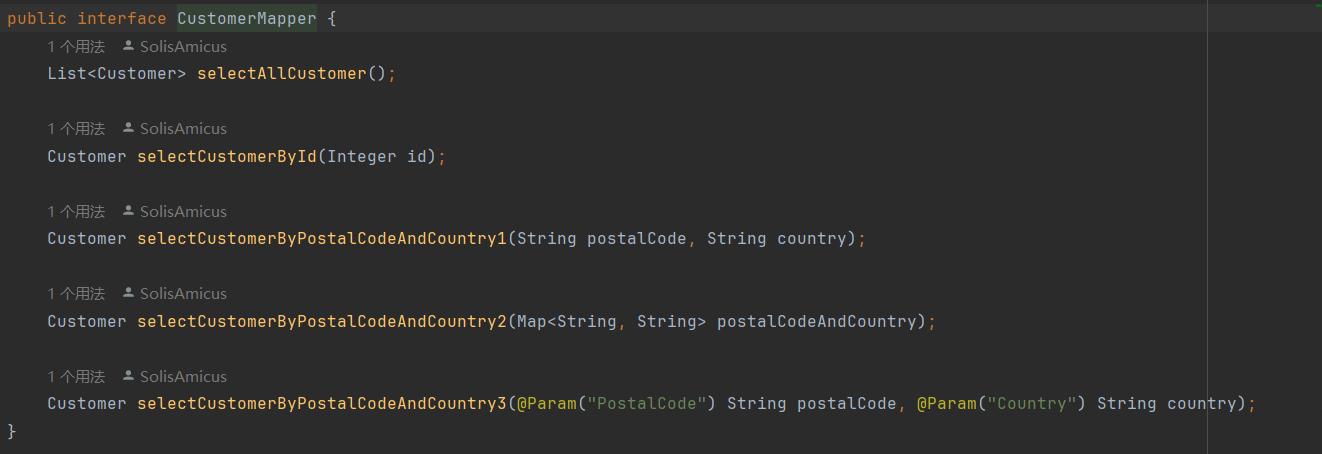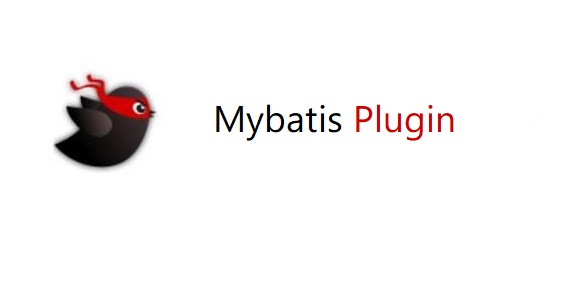⬇ 参考代码:demo4
参考代码:demo4
MyBatis 缓存
MyBatis 提供了两级缓存:一级缓存和二级缓存。
一级缓存
作用范围:一级缓存是会话级别的缓存,它仅在会话(SqlSession)内有效。默认情况下,一级缓存总是被启用的。
工作机制:
- 查询操作:当执行查询操作时,MyBatis 首先检查一级缓存。
- 如果请求的数据在缓存中,MyBatis 将从缓存中返回数据,不会执行数据库查询。
- 如果请求的数据不在缓存中,MyBatis 将执行数据库查询。
- 缓存数据:执行数据库查询后,查询结果会被缓存在一级缓存中。
- 缓存失效:
- 当当前会话结束时,一级缓存中的所有数据都会被清空。
- 当在会话中执行任何写操作(
insert、update、delete)时,MyBatis 会自动清空一级缓存,以避免数据不一致的问题。
生命周期:一级缓存的生命周期与SqlSession的生命周期相同。当SqlSession被关闭时,其一级缓存也会被清空。
1
2
3
| <settings>
<setting name="localCacheScope" value="SESSION"/>
</settings>
|
1
2
3
4
| Customer selectCustomerById(@Param("CustomerId") Integer customerId);
int insertCustomer(Customer customer);
int deleteCustomerById(@Param("CustomerId") Integer customerId);
int updateCustomer(Customer customer);
|
1
2
3
4
5
6
7
8
9
10
11
12
13
14
15
16
17
18
19
20
21
22
23
24
25
26
27
28
29
30
31
| <resultMap id="CustomerMap" type="com.liangjiajia.cs.pojo.Customer">
<result property="customerId" column="CustomerID"/>
<result property="customerName" column="CustomerName"/>
<result property="contactName" column="ContactName"/>
<result property="address" column="Address"/>
<result property="city" column="City"/>
<result property="postalCode" column="PostalCode"/>
<result property="country" column="Country"/>
</resultMap>
<select id="selectCustomerById" resultMap="CustomerMap">
SELECT *
FROM customers
WHERE CustomerID = #{CustomerId}
</select>
<insert id="insertCustomer" useGeneratedKeys="true" keyProperty="customerId">
INSERT INTO customers (CustomerName, ContactName, Address, City, PostalCode, Country)
VALUES (#{customerName}, #{contactName}, #{address}, #{city}, #{postalCode}, #{country})
</insert>
<delete id="deleteCustomerById">
DELETE FROM customers WHERE CustomerID = #{customerId}
</delete>
<update id="updateCustomer">
UPDATE customers
SET CustomerName = #{customerName},
ContactName = #{contactName},
Address = #{address},
City = #{city},
PostalCode = #{postalCode},
Country = #{country}
WHERE CustomerID = #{customerId}
</update>
|
实验一:
1
2
3
4
5
6
7
8
| @Test
public void testOneLevelCache1() {
SqlSession sqlSession = SqlSessionUtils.getSqlSession();
CustomerMapper customerMapper = sqlSession.getMapper(CustomerMapper.class);
Customer customer1 = customerMapper.selectCustomerById(1);
Customer customer2 = customerMapper.selectCustomerById(1);
System.out.println("Is same instance: " + (customer1 == customer2));
}
|
1
2
3
4
5
6
7
8
9
10
| @Test
public void testOneLevelCache2() {
SqlSession sqlSession = SqlSessionUtils.getSqlSession();
OneLevelCacheMapper customerMapper = sqlSession.getMapper(OneLevelCacheMapper.class);
Customer customer1 = customerMapper.selectCustomerById(1);
Customer customer = new Customer("Cardinal", "Tom B. Erichsen", "Skagen 21", "Stavanger", "4006", "Norway");
System.out.println("Add " + customerMapper.insertCustomer(customer) + " customer(s)");
Customer customer2 = customerMapper.selectCustomerById(1);
System.out.println("Is same instance: " + (customer1 == customer2));
}
|

实验三:
1
2
3
4
5
6
7
8
9
10
11
12
| @Test
public void testOneLevelCache3() {
SqlSession sqlSession1 = SqlSessionUtils.getSqlSession();
SqlSession sqlSession2 = SqlSessionUtils.getSqlSession();
OneLevelCacheMapper customerMapper1 = sqlSession1.getMapper(OneLevelCacheMapper.class);
OneLevelCacheMapper customerMapper2 = sqlSession2.getMapper(OneLevelCacheMapper.class);
Customer customer1 = customerMapper1.selectCustomerById(1);
Customer customer = new Customer(92, "Cardinal", "Alfred Schmidt", "Skagen 21", "Frankfurt", "4006", "Norway");
System.out.println("Update " + customerMapper2.updateCustomer(customer) + " customer(s)");
Customer customer2 = customerMapper1.selectCustomerById(1);
System.out.println("Is same instance: " + (customer1 == customer2));
}
|
重新设置:
1
2
3
| <settings>
<setting name="localCacheScope" value="STATEMENT"/>
</settings>
|
会避免出现数据脏读现象。
一级缓存实现的时序图:
二级缓存
作用范围:二级缓存是映射器级别的缓存,跨SqlSession共享。开启二级缓存后,多个会话可以共享缓存数据。
默认情况下,二级缓存是禁用的。需要在 MyBatis 配置文件中配置,以及在 Mapper 映射文件中添加相应的设置。
工作机制:
- 启用二级缓存:首先需要在 MyBatis 配置文件和 Mapper 文件中明确启用二级缓存。
- 查询操作:当执行查询操作时,MyBatis 按照以下顺序查找数据:
- 查找二级缓存:首先检查是否有符合条件的数据存储在二级缓存中。
- 查找一级缓存:如果在二级缓存中没有找到,会检查当前会话的一级缓存。
- 执行数据库查询:如果两级缓存都没有找到数据,最后才会执行数据库查询。
- 缓存数据:当数据通过数据库查询得到后,这些数据会被缓存在当前会话的一级缓存以及相应的二级缓存中。
- 缓存失效:
- 当当前会话结束时,它可能会将一级缓存中的数据转移到二级缓存。只有当会话提交时,更改才会影响到二级缓存;关闭会话时,不涉及数据变更,一般不会直接影响二级缓存的内容。
- 当执行写操作(
insert、update、delete)时,MyBatis 会自动清空二级缓存中所有相关的缓存内容,以避免数据不一致的问题。这意味着,一旦有写操作发生,依赖于相同 Mapper 的二级缓存都会被清空,确保后续的读操作能获取到最新的数据。
生命周期:二级缓存的生命周期与SqlSessionFactory的生命周期相同。当SqlSessionFactory被关闭时,其二级缓存也会被清空。
⭐ 开启二级缓存步骤:
开启二级缓存步骤:
mybatis-config.xml:
1
2
3
| <settings>
<setting name="cacheEnabled" value="true"/>
</settings>
|
CustomerMapper.xml:
eviction:缓存回收策略,决定了对象如何从缓存中移除。
LRU(Least Recently Used):最近最少使用的,移除最长时间不被使用的对象。FIFO(First In First Out):先进先出,按对象进入缓存的顺序移除对象。SOFT(Soft References):软引用,基于垃圾回收器状态和软引用规则移除对象。WEAK(Weak References):弱引用,更积极地基于垃圾回收器状态移除对象。
flushInterval:缓存刷新间隔,定期清空缓存。
- 以毫秒为单位的时间间隔。例如,
60000 表示每 60 秒刷新缓存。
size:引用的对象数,缓存中可以存储的最大对象数量。
readOnly:缓存数据的只读状态。
true:表示缓存的对象不会被修改,因此可以安全地由多个调用者共享相同的实例,不需要复制对象,性能较高。false:表示缓存的对象可以被检索出来并修改,每次查询都会返回缓存对象的一个副本,安全性较高,但性能相对较低。
type:指定自定义缓存的实现。
- 缓存实现的全限定类名。MyBatis 允许使用第三方缓存实现,如 Ehcache、Redis等。
blocking:请求的缓存元素不在缓存中时,是否阻塞缓存调用,直到缓存元素被加载。-
Customer.java:确保实体类是可序列化的
1
2
3
4
| public class Customer implements Serializable {
private static final long serialVersionUID = 1L;
}
|
1⃣ 实验一:
实验一:
1
2
3
4
5
6
7
8
9
10
| @Test
public void testSecondLevelCache1() {
SqlSessionFactory sqlSessionFactory = SqlSessionFactoryUtils.getSqlSessionFactory();
SqlSession sqlSession1 = sqlSessionFactory.openSession();
SqlSession sqlSession2 = sqlSessionFactory.openSession();
TwoLevelCacheMapper customerMapper1 = sqlSession1.getMapper(TwoLevelCacheMapper.class);
TwoLevelCacheMapper customerMapper2 = sqlSession2.getMapper(TwoLevelCacheMapper.class);
System.out.println(customerMapper1.selectCustomerById(1));
System.out.println(customerMapper2.selectCustomerById(1));
}
|
2⃣ 实验二:
实验二:
1
2
3
4
5
6
7
8
9
10
11
| @Test
public void testSecondLevelCache2() {
SqlSessionFactory sqlSessionFactory = SqlSessionFactoryUtils.getSqlSessionFactory();
SqlSession sqlSession1 = sqlSessionFactory.openSession();
SqlSession sqlSession2 = sqlSessionFactory.openSession();
TwoLevelCacheMapper customerMapper1 = sqlSession1.getMapper(TwoLevelCacheMapper.class);
TwoLevelCacheMapper customerMapper2 = sqlSession2.getMapper(TwoLevelCacheMapper.class);
System.out.println(customerMapper1.selectCustomerById(1));
sqlSession1.commit();
System.out.println(customerMapper2.selectCustomerById(1));
}
|
 实验三:
实验三:
1
2
3
4
5
6
7
8
9
10
11
12
13
14
15
16
17
| @Test
public void testSecondLevelCache3() {
SqlSessionFactory sqlSessionFactory = SqlSessionFactoryUtils.getSqlSessionFactory();
SqlSession sqlSession1 = sqlSessionFactory.openSession();
SqlSession sqlSession2 = sqlSessionFactory.openSession();
SqlSession sqlSession3 = sqlSessionFactory.openSession();
TwoLevelCacheMapper customerMapper1 = sqlSession1.getMapper(TwoLevelCacheMapper.class);
TwoLevelCacheMapper customerMapper2 = sqlSession2.getMapper(TwoLevelCacheMapper.class);
TwoLevelCacheMapper customerMapper3 = sqlSession3.getMapper(TwoLevelCacheMapper.class);
System.out.println(customerMapper1.selectCustomerById(1));
sqlSession1.commit();
System.out.println(customerMapper2.selectCustomerById(1));
CustomerSerializable customer = new CustomerSerializable(92, "Cardinal", "Alfred Schmidt", "Skagen 21", "Frankfurt", "00000", "Mexico");
System.out.println("Update " + customerMapper3.updateCustomer(customer) + " customer(s)");
sqlSession3.commit();
System.out.println(customerMapper2.selectCustomerById(1));
}
|

流程分析:
- 初始化三个 SqlSession:sqlSession1,sqlSession2 和 sqlSession3,它们都来源于同一个 SqlSessionFactory,可以共享二级缓存。
- 第一次查询:通过 customerMapper1 执行查询 ID 为 1 的客户信息,并提交 sqlSession1,查询结果被存储在二级缓存中。
- 第二次查询:通过 customerMapper2 执行相同的查询。由于 sqlSession1 的提交使得查询结果已经被放入二级缓存,能够直接从二级缓存中获取结果,而不需要再次访问数据库。
- 更新操作:通过 customerMapper3 更新客户的信息,并提交 sqlSession3,触发了二级缓存的清空。
- 第三次查询:再次通过 customerMapper2 执行相同的查询。由于 sqlSession3 的提交使得二级缓存被清空,需要重新访问数据库来获取最新数据。
4⃣ 实验四:
实验四:
1
2
3
4
5
6
7
8
9
10
11
12
13
14
15
16
17
| @Test
public void testSecondLevelCache4() {
SqlSessionFactory sqlSessionFactory = SqlSessionFactoryUtils.getSqlSessionFactory();
SqlSession sqlSession1 = sqlSessionFactory.openSession();
SqlSession sqlSession2 = sqlSessionFactory.openSession();
SqlSession sqlSession3 = sqlSessionFactory.openSession();
OrderMapper orderMapper1 = sqlSession1.getMapper(OrderMapper.class);
OrderMapper orderMapper2 = sqlSession2.getMapper(OrderMapper.class);
TwoLevelCacheMapper customerMapper = sqlSession3.getMapper(TwoLevelCacheMapper.class);
System.out.println(orderMapper1.selectOrderByIdWithCustomer(10365));
sqlSession1.commit();
System.out.println(orderMapper2.selectOrderByIdWithCustomer(10365));
CustomerSerializable customer = new CustomerSerializable(3, "Cardinal", "Alfred Schmidt", "Skagen 21", "Frankfurt", "00000", "Mexico");
System.out.println("Update " + customerMapper.updateCustomer(customer) + " customer(s)");
sqlSession3.commit();
System.out.println(orderMapper2.selectOrderByIdWithCustomer(10365));
}
|

- 初始化三个
SqlSession:sqlSession1,sqlSession2 和 sqlSession3,它们都来源于同一个 SqlSessionFactory,可以共享二级缓存。
- 第一次查询:通过 orderMapper1 执行查询 ID 为 10365 的订单信息,包括关联的客户信息,并提交 sqlSession1,查询结果(订单及其客户信息)被存储在二级缓存中。
- 第二次查询:通过 orderMapper2 执行相同的查询。由于的 sqlSession1 的提交使得查询结果已经被放入二级缓存,能够直接从二级缓存中获取结果,而不需要再次访问数据库。
- 更新操作:通过 customerMapper 更新客户的信息,并提交 sqlSession3,触发了二级缓存的清空。
❗ customerMapper 的 updateCustomer 不属于 orderMapper 的 namespace,所以 orderMapper 下的 Cache 没有感知到变化
customerMapper 的 updateCustomer 不属于 orderMapper 的 namespace,所以 orderMapper 下的 Cache 没有感知到变化
- 第三次查询:再次通过 orderMapper2 执行相同的查询,会从缓存中读到脏数据!
5⃣ 实验五:
实验五:
还原原本的数据库
在 OrderMapper.xml 中使用<cache-ref>标签引用 TwoLevelCacheMapper.xml 缓存空间。
1
| <cache-ref namespace="com.liangjiajia.cs.mapper.TwoLevelCacheMapper"/>
|
1
2
3
4
5
6
7
8
9
10
11
12
13
14
15
16
17
| @Test
public void testSecondLevelCache4() {
SqlSessionFactory sqlSessionFactory = SqlSessionFactoryUtils.getSqlSessionFactory();
SqlSession sqlSession1 = sqlSessionFactory.openSession();
SqlSession sqlSession2 = sqlSessionFactory.openSession();
SqlSession sqlSession3 = sqlSessionFactory.openSession();
OrderMapper orderMapper1 = sqlSession1.getMapper(OrderMapper.class);
OrderMapper orderMapper2 = sqlSession2.getMapper(OrderMapper.class);
TwoLevelCacheMapper customerMapper = sqlSession3.getMapper(TwoLevelCacheMapper.class);
System.out.println(orderMapper1.selectOrderByIdWithCustomer(10365));
sqlSession1.commit();
System.out.println(orderMapper2.selectOrderByIdWithCustomer(10365));
CustomerSerializable customer = new CustomerSerializable(3, "Cardinal", "Alfred Schmidt", "Skagen 21", "Frankfurt", "00000", "Mexico");
System.out.println("Update " + customerMapper.updateCustomer(customer) + " customer(s)");
sqlSession3.commit();
System.out.println(orderMapper2.selectOrderByIdWithCustomer(10365));
}
|

二级缓存实现的时序图:
整合 EHCache
1⃣ 添加依赖
添加依赖
1
2
3
4
5
| <dependency>
<groupId>org.mybatis.caches</groupId>
<artifactId>mybatis-ehcache</artifactId>
<version>${mybatis-ehcache.version}</version>
</dependency>
|
2⃣ 配置 EHCache
配置 EHCache
1
2
3
4
5
6
7
8
9
10
11
12
13
14
15
| <?xml version="1.0" encoding="utf-8" ?>
<ehcache xmlns:xsi="http://www.w3.org/2001/XMLSchema-instance"
xsi:noNamespaceSchemaLocation="../config/ehcache.xsd">
<diskStore path="xxx"/>
<defaultCache
maxElementsInMemory="1000"
maxElementsOnDisk="10000000"
eternal="false"
overflowToDisk="true"
timeToIdleSeconds="120"
timeToLiveSeconds="120"
diskExpiryThreadIntervalSeconds="120"
memoryStoreEvictionPolicy="LRU">
</defaultCache>
</ehcache>
|
3⃣ 配置 MyBatis 使用 EHCache
配置 MyBatis 使用 EHCache
1
| <cache type="org.mybatis.caches.ehcache.EhcacheCache"/>
|

















